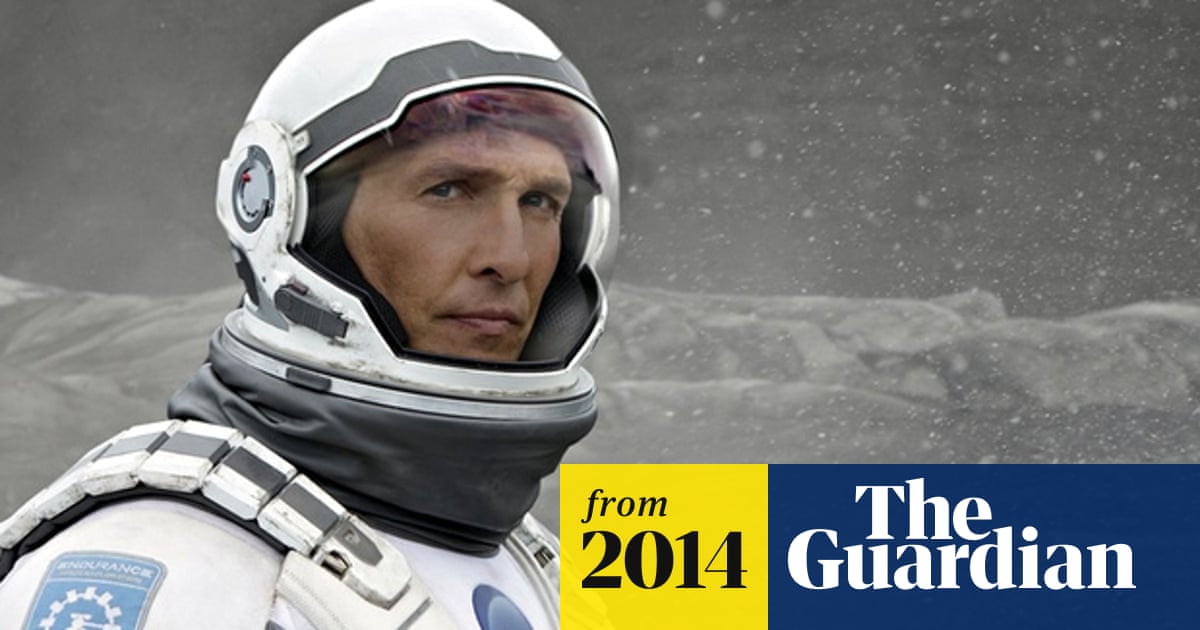Most film-makers think small or medium. Not Christopher Nolan, for whom even big or bigger won’t cut it. His new picture is his biggest: biggest event, biggest spectacle, biggest pastiche, biggest disappointment. It’s a colossal science-fiction adventure avowedly in the high visionary-futurist style of Kubrick’s 2001, but sugared up with touches of M Night Shyamalan. Nolan takes on the idealism and yearning from 2001, but leaves behind the subversion, the disquiet and Kubrick’s real interest in imagining a post-human future. What interests Nolan more is looping back to a sentimentally reinforced present.
Interstellar is a muscular, ambitious film with bang-per-buck visuals that broadly make up for the moderate acting and toenail-extracting dialogue. Nolan’s stars are Matthew McConaughey, Anne Hathaway and Michael Caine, who have not exactly been encouraged to leave their performance comfort zones, or divert from their usual acting orbit trajectories. McConaughey can be entirely insufferable, though there is one real emotional coup in Interstellar that has been slightly overlooked in the Enronising hype the movie has triggered so far.
A global food crisis has turned America into a coast-to-coast dustbowl of unproductive emergency farmland. McConaughey plays Cooper, a retired Nasa pilot who, like every other adult, has had to turn to the soil: he is a widower living with two tricky kids, Tom (Timothée Chalamet) and Murph (Mackenzie Foy), and his grumpy father-in-law Donald (John Lithgow).
Cooper is furious at the world’s dreary earthbound dullness, and that his kids’ school teaches that the Apollo moon missions were a hoax designed to bankrupt the Soviets. He is rightly disgusted at this nonsense: I would have liked to have heard a more explicit speech attacking it, and incidentally making it clear that space exploration was not what did for the Soviet economy. Weird Shyamalanesque signs lead Cooper to a top-secret research station where his old Nasa boss Dr Brand (Caine) tells his stunned ex-employee that Earth is finished, but that a recently discovered “wormhole” in the space-time continuum looks likely to lead us to other habitable planets for resettlement – and that Cooper surely has the Chuck-Yeagerish Right Stuff to lead an expeditionary space-team right away, without training or preparation. His crew will include Brand’s daughter, the comely and borderline-preposterous Amelia (Hathaway), along with Doyle (Wes Bentley) and Romilly (David Gyasi).
They get the regulation white suits, Nixon-era tech, long-sleep hibernation routines, flickery video messages from home and standard-issue talking robot called Tars, who is quirky but obedient – basically Hal2D2. Wormholes are presented in this film as different from, say, wizards or unicorns: they are supposed to be scientifically real. Kind of. Nolan has been inspired by the work on this subject by the theoretical physicist Kip Thorne from Caltech, who is not just scientific consultant but executive producer, a credit that may be intended as an extra-textual guarantee of authenticity. But, inevitably, these wormholes do the traditional narrative work of a warp drive or time machines. When McConaughey thinks of something mathematically brilliant to do with gravitational pull and fuel consumption, he writes it on his little spaceship whiteboard and Hathaway says frowningly: “Yeah. That’ll work!” It’s all you can do not to smile at our two rocket scientists.
Nolan contrives a great scene: Cooper comes out of the hole to find that time has slipped forward decades while he’s been away hours and 20 years’ worth of backed-up video messages reveal that his little kids have turned, in the blink of an eye, into two middle-aged adults, played by Casey Affleck and Jessica Chastain: angry and embittered in their own ways by their abandonment. With some psychological acuity, Nolan shows that grownup Tom is permanently trapped in psychological defeat. But all the rest is mannerism and starburst portentousness, underscored by Hans Zimmer’s score that toys playfully with Straussian themes but relies on heavy, wheezingly religiose, organ-type chords.
The appearance of Interstellar is a moment to reflect that Kubrickian sci-fi, like Loachian social-realism of the same 60s period, was once rooted in the real world: social-realist films could change the law, and sci-fi reflected and even inspired a world in which the moon really was about to be conquered, and everyone assumed that manned space exploration would continue onwards at the same rate. Today, this is a lost futurism. What remains is style, and Nolan has got plenty of that. He gives us more of his signature universe-manipulations, in which the ground or sea will turn up 90 degrees, like a surreal cliff-face: huge, dreamlike and wrong. It’s exhilarating. But Interstellar’s deep space turns out to be shallower than we expected.
More on Interstellar
An astrophysicist’s verdict
Christopher Nolan interviewed
Video interviews with the cast
Interstellar and Americana
First look review

